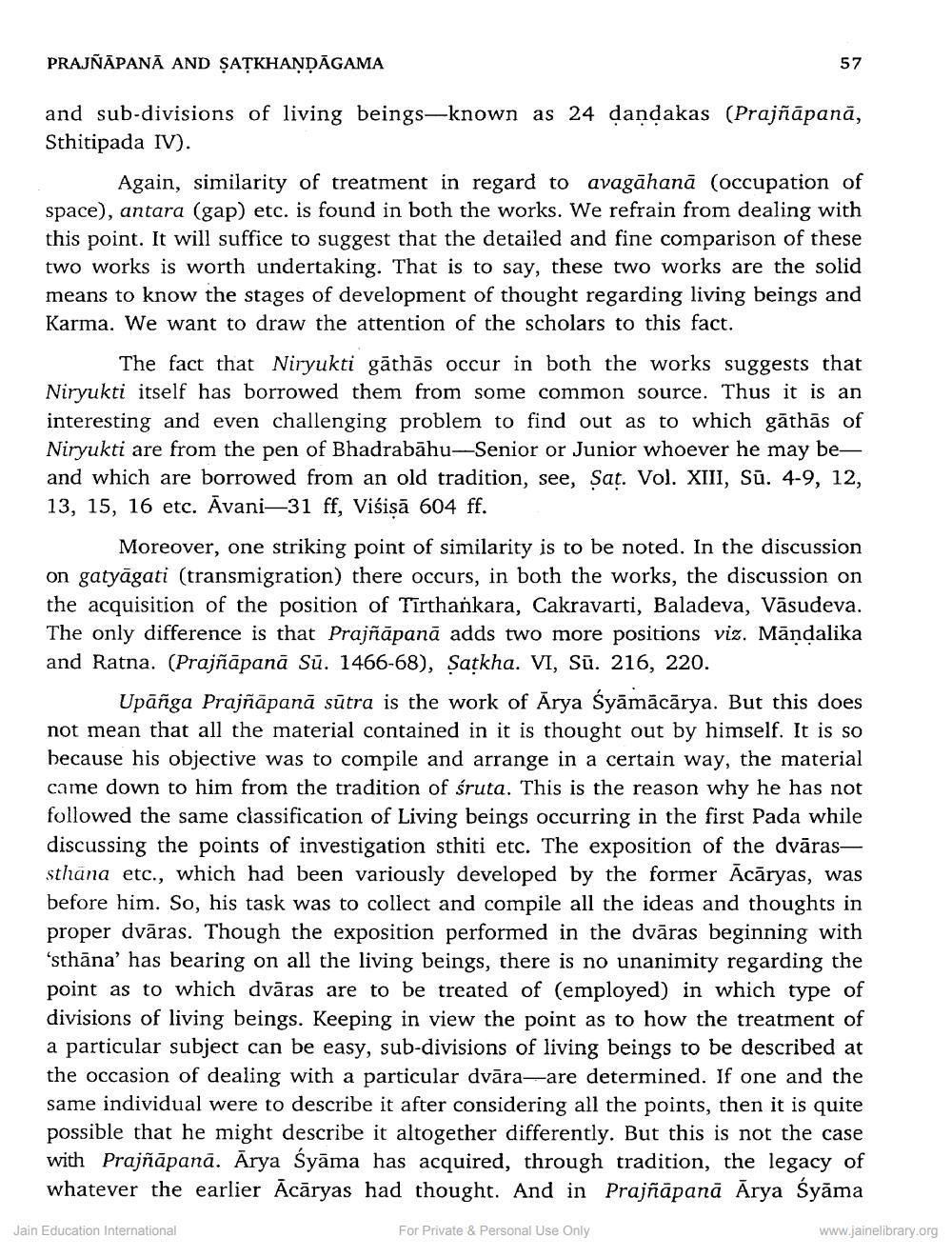________________
PRAJNĀPANĀ AND SAȚKHANDĀGAMA
57
and sub-divisions of living beings-known as 24 dandakas (Prajñāpanā, Sthitipada IV).
Again, similarity of treatment in regard to avagāhanā (occupation of space), antara (gap) etc. is found in both the works. We refrain from dealing with this point. It will suffice to suggest that the detailed and fine comparison of these two works is worth undertaking. That is to say, these two works are the solid means to know the stages of development of thought regarding living beings and Karma. We want to draw the attention of the scholars to this fact.
The fact that Niryukti gāthās occur in both the works suggests that Niryukti itself has borrowed them from some common source. Thus it is an interesting and even challenging problem to find out as to which gāthās of Niryukti are from the pen of Bhadrabāhu-Senior or Junior whoever he may beand which are borrowed from an old tradition, see, Sat. Vol. XIII, Sū. 4-9, 12, 13, 15, 16 etc. Āvani-31 ff, Visisā 604 ff.
Moreover, one striking point of similarity is to be noted. In the discussion on gatyāgati (transmigration) there occurs, in both the works, the discussion on the acquisition of the position of Tīrthankara, Cakravarti, Baladeva, Vāsudeva. The only difference is that Prajñāpanā adds two more positions viz. Māndalika and Ratna. (Prajñāpanā Sū. 1466-68), Satkha. VI, Sū. 216, 220.
Upāñga Prajñāpanā sūtra is the work of Arya Śyāmācārya. But this does not mean that all the material contained in it is thought out by himself. It is so because his objective was to compile and arrange in a certain way, the material came down to him from the tradition of śruta. This is the reason why he has not followed the same classification of Living beings occurring in the first Pada while discussing the points of investigation sthiti etc. The exposition of the dvārassthana etc., which had been variously developed by the former Ācāryas, was before him. So, his task was to collect and compile all the ideas and thoughts in proper dvāras. Though the exposition performed in the dvāras beginning with 'sthāna' has bearing on all the living beings, there is no unanimity regarding the point as to which dvāras are to be treated of (employed) in which type of divisions of living beings. Keeping in view the point as to how the treatment of a particular subject can be easy, sub-divisions of living beings to be described at the occasion of dealing with a particular dvāra-are determined. If one and the same individual were to describe it after considering all the points, then it is quite possible that he might describe it altogether differently. But this is not the with Prajñāpanā. Ārya Syāma has acquired, through tradition, the legacy of whatever the earlier Ācāryas had thought. And in Prajñāpanā Ārya Śyāma
Jain Education International
For Private & Personal Use Only
www.jainelibrary.org




